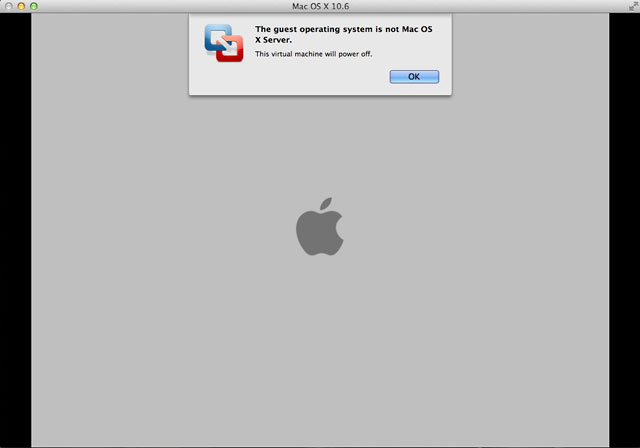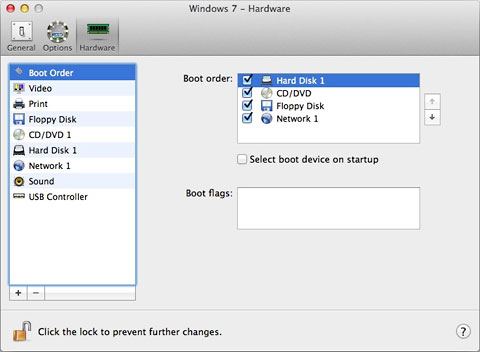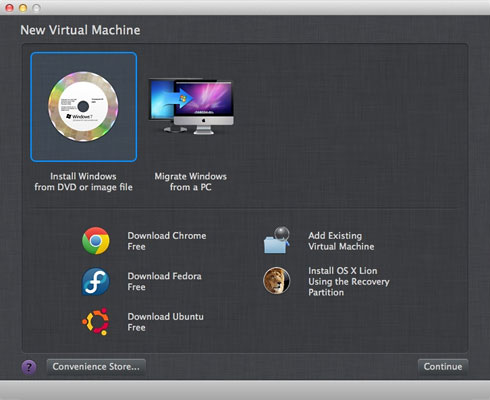Good as the Mac is (and it's very good), some Mac users do need to
run Windows software from time to time. Maybe they need to run a
particular piece of Windows-only accounting software in order to work
with their accountant or with a client. Or maybe they're web developers
and need to ensure that their pages display properly in Windows-only
Internet Explorer.
Four Ways to Run Windows Apps on Your Mac
They could, of course, simply get a Windows computer and keep it for
those times. But since Apple moved to building Macs with Intel
processors in 2006, that hasn't been necessary. Instead, there are a
variety of ways to run Windows software, often along with other PC
operating systems and software, right on a Mac. Among the
techniques:
- Codeweavers' Crossover is
built on the open source WINE
project, to allow Windows software to run on a non-Windows computer
without installing Windows. Neat idea with just one major problem - it
only works with some software.
- Apple's Boot Camp allows users to nondestructively create a Windows
partition on their Mac, install Windows (Vista or Windows 7 only, and
non-Windows operating systems are not officially supported), and then
boot to their choice of either Windows or Mac OS X. Good: When
running Windows (or OS X) that operating system gets use of all
the system memory and other resources. Bad: You can only run one
operating system at a time.
- Remotely access another computer. Recent Mac OS X versions have had
the ability to connect to remote computers set up with the
widely-available (and open source) VNC protocol. Other alternatives
include Microsoft's Remote
Desktop Connection Client for Mac, the http-based LogMeIn, and more. These, however, require
having a computer running Windows - and a compatible remote access
server - somewhere accessible by network or Internet.
- Finally, Intel-powered Macs can run any of a wide range of PC
operating systems in a virtual session, letting them run the "guest"
operating system and applications alongside the native Mac "host"
operating system and native Mac applications. The downside: You'll need
enough system memory to provide an adequate amount for both Windows (or
other PC operating system) and its applications and the Mac OS (and
applications) that are all running at the same time. Moreover, running
an operating system virtually is going to have a performance hit
compared to booting to it directly using Boot Camp. (Though performance
is vastly improved over the emulation available on prior-generation
PowerPC Macs).
For many Mac owners needing access to Windows applications now and
again, the performance penalties of virtualization are a small price to
pay compared to the convenience of not having to reboot and of being
able to mix Mac and Windows applications on the same screen.
Three Virtualization Options
There are three major virtualization programs for Mac users.
VirtualBox is an open source
program owned by Oracle. It's available as a free download (a big plus)
and may be all you need. But it's not being developed as aggressively
as the pair of commercial products and lacks some of those products'
features - such as the ability to run a Boot Camp installation in a
virtual session, or to mix and match Windows and Mac applications on
the Dock or the Mac desktop.
For the past few years, a pair of commercial programs, Parallels Desktop
and VMware Fusion, have been
available as virtualization options for Intel Mac users. Each has been
pushed to match the other's features, performance, and $79 list price.
(Note that each is frequently on sale on their respective websites -
and each offers special pricing for customers of the other.) The
release of Mac OS X 10.7
Lion was quickly followed by new versions of each (Parallels
Desktop 7 and VMware Fusion 4) within days of one another.
Parallels Desktop was first released in June 2006, soon after the
first Intel Macs. As a result, for many Mac owners, it became the name
they think of when they think of virtualization, and it garnered bonus
points for coming to the Mac platform at a time when better-known
virtualization companies like VMware were ignoring it.
VMware has a long history producing virtualization software for PC
networks and desktop users with products for (among others) Windows and
Linux. They released their Mac version, Fusion, in mid-2007, a year
after Parallels Desktop.
To over-generalize, Parallels' products have looked and felt more
like Mac software than VMware's, which have tended to have more of a
PC-style industrial design. Parallels Desktop was also first to release
features to better integrate Windows applications into the Mac desktop
experience, with icons on the Dock and program windows that can
optionally float on the Mac desktop rather remaining "trapped" in a
Windows window.
On the other hand, I found the last couple of Parallels Desktop
versions buggy and unstable. For me, Parallels Desktop versions 5 and 6
may have had the looks of a flashy sports car, but they spent too much
time in the shop. VMware Fusion may have had all the visual appeal of a
truck, but it much more reliably carried the load. As a result, it was
the one I tended to use.
Virtualizing Mac OS X
The new versions of each of these programs take advantage of a
change in Apple's licensing language regarding virtualization. (You may
wonder why any Mac user would want to run OS X in a virtualization
session window. It can be handy for developers, giving them in effect
another Mac on which to test potentially buggy prerelease
versions.)
OS X 10.5 Leopard and OS X 10.6 Snow Leopard allowed Mac
owners to run OS X in a virtual session on their Macs - but only the
server versions. The fine print of the OS X 10.7 license expands that
to allow the installation and use of both the server and desktop
versions of Lion in virtual sessions - but doesn't allow similar
use of desktop versions of early OS X releases.
That's too bad. I was disappointed that Apple dropped Rosetta from Lion, the technology that
allowed Intel Macs running OS X 10.4 through 10.6 to use software
developed in the PowerPC-era. Running one of these versions in a
virtual session would be workaround for Lion users who still need to
run PowerPC software. An awkward one, to be sure, requiring booting up
the older Mac OS in a window in order to run an older program, but one
that might be worthwhile in some cases.
The limitation is one of licensing language, not a limitation of the
technology. VMware demonstrated that, perhaps by accident. In November,
the company released a modest 4.1 upgrade version to Fusion. While it
wasn't on the "new features" list, users quickly discovered that the
new version allowed them to create desktop Leopard or Snow Leopard
virtual systems.

VMware Fusion 4.11 prevents the use of virtual non-server Mac
environments.
Within a few days, VMware replaced that with a 4.11 release, which,
like earlier versions (and like Parallels Desktop), refuses to allow OS
X 10.5/6 desktop discs to be used and refused to run desktop Leopard or
Snow Leopard virtual systems created with the 4.01 version.

The error message VMware Fusion gives when you try to run non-server OS
X virtually.
The previous version of both products will run under Lion - though I
needed to reinstall Parallels 6.x before it would run on my Lion
system. (Then again, as I've said, I was never a big fan of that
version of Parallels in any case.)
The Latest Versions
Both new versions offer pretty similar set of new features -
improved graphics performers (of most importance, I suspect, to Mac
users wanting to run Windows games), integration with new Lion features
like Mission Control, and the ability to create desktop Lion virtual
systems.
Parallels remains prettier. See for instance, the virtual machines
list from each program.

VMware Fusion is far more utilitarian than Parallels.

Parallels is prettier than VMware.
But beauty is only skin deep. The new version of Parallels seems
less buggy than the past couple of versions and is one that I'm much
happier using. I do find that Mac web browsers - and especially Safari
- become sluggish while a Parallels session is running, though this is
not as bad as it was with the past couple of versions.
Industrial-strength Fusion continues to just keep ticking - but with
the improvements to Parallels, this is less of an advantage.
More of a Fusion advantage: Fusion continues to offer support for a
broader range of guest operating systems.

Configuring Windows 7 in Parallels.

Configuring Fusion.
Similarly, while both support last October's Ubuntu (11.10) release,
based on past performance when April's new release comes out (ver.
12.04), I'd expect Fusion to support it, but not Parallels. VMware - to
a large extent because of its well-developed Windows and Linux
ecosystem - offers about 1,900 downloadable "appliances" - preinstalled
operating systems, often preconfigured for specific functions.
Parallels' equivalent "convenience store" offers only about 100.
(On the other hand, once again Parallels' Create a New Virtual
Machine window is much nicer looking than Fusion's equivalent - and
offers users quick links to several of the more popular non-Windows
virtual options).

Parallels' Create a New Virtual Machine window.

Fusion's New Virtual Machine Assistant.
Another plus for Fusion - for home users, a single purchase can be
legally installed on multiple Macs. Parallels requires a copy for each
Mac in your household.
A plus for Parallels, though - it can be configured to provide more
memory for video (assuming you've got lots of installed RAM). Add in
better support for Windows' DirectX, and the result is better gaming
performance.

Fusion's Virtual Machines menu.
So which should you get? For the past couple of years, Fusion was
the clear winner for me. This time around, with Parallels pretty much
getting over its instability issues, it's pretty much of a draw.
Parallels is prettier and more Mac-like and offers gamers better video
performance. Fusion supports more operating systems and pre-made
appliances and can be installed onto multiple Macs in one
household.
If you're happy with a previous version of either, neither new
version is a "must have" upgrade, although gamers wanting every ounce
of potential performance will definitely like the boost.
And if you're new to virtualization but need or want to run another
operating system (or multiple copies of Lion) on your Mac, either will
do just fine. 











